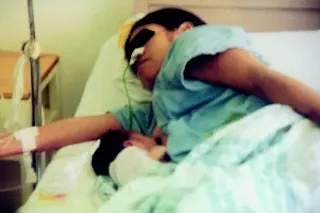If you had to give yourself a C-section to save your unborn baby, could you do it? Having given birth to my own child, I’m not sure I could. But this woman did it. She had no other choice: she lost a previous baby during protracted labor, and she lived in a small village eight hours drive from the nearest hospital. In the abstract and detailed case report below, doctors tell her (harrowing) story. And they tell it for a good reason: “This case, which would not have occurred if prenatal and delivery care had been available, should make health providers aware that the basic reproductive needs of women are not met.” Truth.
Self-inflicted cesarean section with maternal and fetal survival.
ABSTRACT: “An unusual case of self-inflicted cesarean section with maternal and child survival is presented. No similar event was found in an Internet literature search. Because of a lack ...














